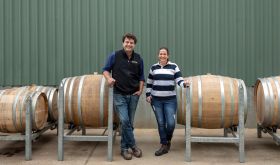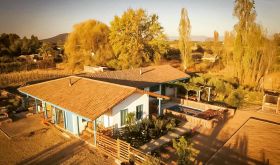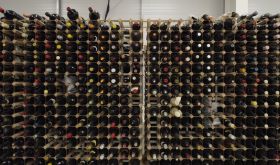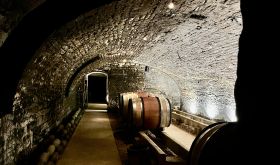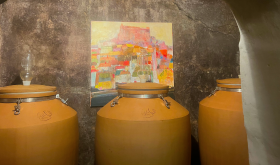‘If you had to choose: Willamette Valley Chardonnay or Pinot Noir?’, a friend asked as we exited a tasting event.
‘Chardonnay.’
There was no pause. No moment of speculation. The answer was halfway out of my mouth before he even finished the question.
Please don’t misunderstand me – Willamette Valley Pinot Noir is fabulous. But Willamette Valley Chardonnay graces my dinner table weekly. Good examples show acidity that is so tense and energetic that even after a wine goes through full malolactic conversion it almost never feels heavy; the fruit is crisp; the body moderate; and the delicate vanilla notes and supple texture are integrated so seamlessly that, unless you focus on it, you don’t realise that they come more from masterful oak handling than they do from fruit. To top it all off, these wines will gladly take a decade of age.
The only problem is, the market has finally caught on.
In 2012, when Jancis made Bergström’s 2009 Old Stones Chardonnay her wine of the week, consumers were just starting to catch wind of how good Willamette Valley Chardonnay could be. At that time, growers in the northern Willamette Valley (where most of the fruit for these wines is grown) were selling Chardonnay for an average of $1,880 per ton while Pinot Noir went for an average of $2,918 per ton. But as consumer demand grew, so did winery demand for grapes. Fast forward to 2023, and Chardonnay was commanding an average of $2,850 per ton to Pinot Noir’s $2,798. That’s a 52% price increase v a 4% decline! These days, I almost expect the price tags on my favourite local Chardonnays to pain me.
Back in April I was sitting at my dining-room table tasting through a handful of Big Table Farm’s wines when I stopped and backtracked. The labels on these wines are gorgeous – featuring hand-drawn illustrations by co-owner Clare Carver, hand-pressed onto thick paper – but there’s no information on the front. Tasting with the labels facing me, I’d assumed that the first Chardonnay I’d tasted – perfectly balanced with aromas of tangy lemon sorbet, blanched almond and a hint of sweet vanilla complemented by a thrumming minerality and crisp acidity, was their $95 Elusive Queen Chardonnay. It was only after arriving at the $95 Chardonnay (admittedly quite a step up) that I realised that what I’d though was a $95 wine was in fact $34. I immediately took to Wine-Searcher.com.
Unfortunately for some, Big Table Farm is little, and they sell their wines only in the US and the UK. Fortunately for me, that’s just enough distribution to warrant a wine of the week.
The idea for Big Table Farm began to take shape in 2005, when winemaker Brian Marcy woke up, rolled over, and told his wife, Clare Carver, that he didn’t think that the housing bubble would last forever. If they wanted to pursue their dream of having a farm and winery, they needed to sell their home in downtown Napa and head north.
The 70-acre (28-ha) property that the couple bought in 2006 was bigger than either of them envisioned and money was tight enough that they weren’t sure they’d be able to purchase fruit. Combing through any and all financial assets, Marcy found that he had managed to overlook $4,000 worth of Grainger stock from working at a warehouse in his early 20s. It wasn’t enough to buy Pinot Noir – but it was enough to make 150 cases of Syrah. Big Table Farm was born.
The couple grew the brand as they could afford to – adding a new cuvée here, picking up a fruit contract there, buying equipment when money allowed, and finally, in 2021, beginning to plant their own property. For Marcy and Carver, sustainability – in their business, in their farming and in their winemaking – was paramount. They sought out growers that farmed organically (certification not required), emphasised wine quality, kept prices fair, and set boundaries that would allow them to focus on farming and winemaking.
Big Table Farm’s first vintage of Willamette Valley Chardonnay was made in 2011 and, for the next six years, it was the only Chardonnay they sold. In 2017 they renamed the cuvée ‘The Wild Bee’, lowered the price and launched two AVA-specific Chardonnays – Eola-Amity Hills and Yamhill-Carlton. (A few years later they launched The Elusive Queen). Lowering the price of The Wild Bee made it more accessible to more people and allowed Carver and Marcy to sell it to restaurants at a low-enough price that it could be poured by the glass – and yet they did not change the fruit sources or process involved in making it.
They source the fruit for this wine from seven sites in Willamette Valley: Durant in Dundee Hills, Yates Conwell and Quandry in Yamhill-Carlton, Bieze and X Omni in Eola-Amity Hills, Johan in Van Duzer and Sunnyside in Willamette Valley.
Unusually, they press the fruit in whole clusters in basket presses. The reason this is unusual is that baskets don’t accommodate nearly as much fruit as a pneumatic press does, so the process takes much longer and yields much less juice. But Carver tells me that as long as they pre-crush the clusters before they go into the press, there’s no issue. I speculate that the extra time the juice spends trickling its way through the press may be one of the reasons Big Table Farm’s Chardonnays are so texturally rich.
Once pressed, the juice is put into barrels – in the case of the 2022 and 2023 vintages about 15% of these barrels were new – where it ferments with ambient yeasts. They stir the lees daily throughout fermentation and weekly during maturation (10–11 months). During maturation the wine goes through full malolactic conversion as a result of ambient lactic acid bacteria. The wine is then bottled unfiltered and unfined at a finished alcohol level just shy of 13% abv. The result is stunningly delicious.
While I slightly prefer the crispness of the 2023 vintage, my note on the 2022 was absolutely glowing. In the UK, Wanderlust Wines has the 2022 in stock. In the US, the 2023 can be ordered from Big Table Farm while the best price for the 2022 is currently listed by K&L Wine Merchants in San Francisco.
To get your bearings in the Willamette Valley, check out this World Atlas of Wine map; and Sam's entry in The Oxford Companion to Wine in addition to hundreds of wine reviews in our database. All images courtesy of Big Table Farm.







